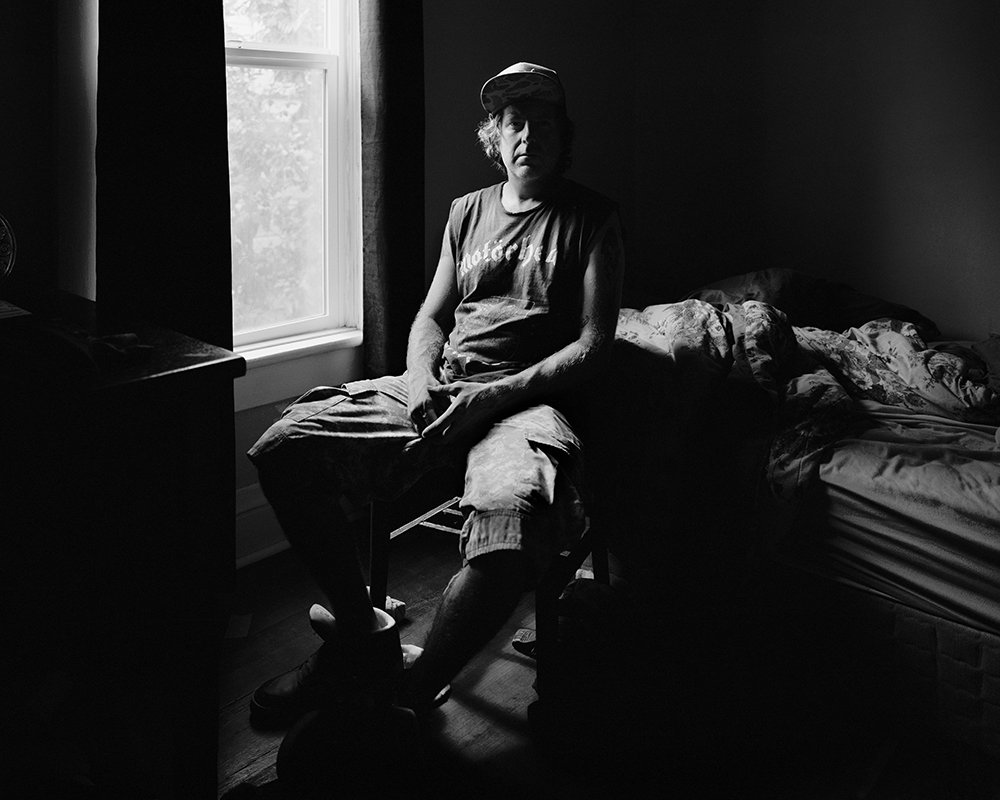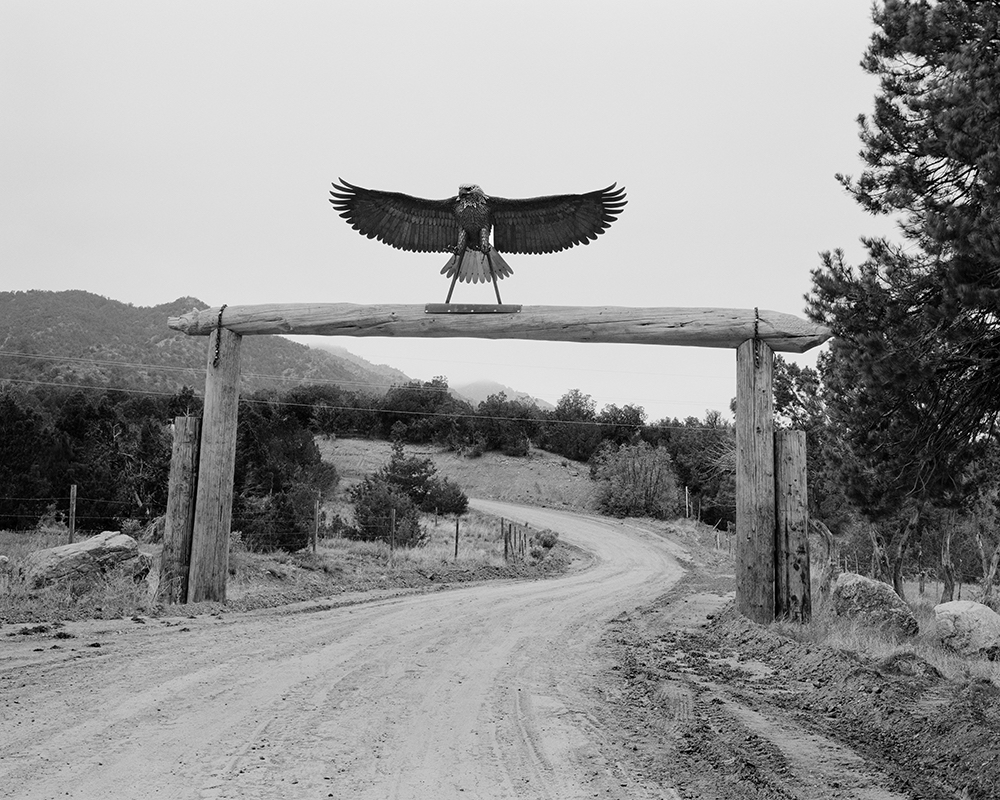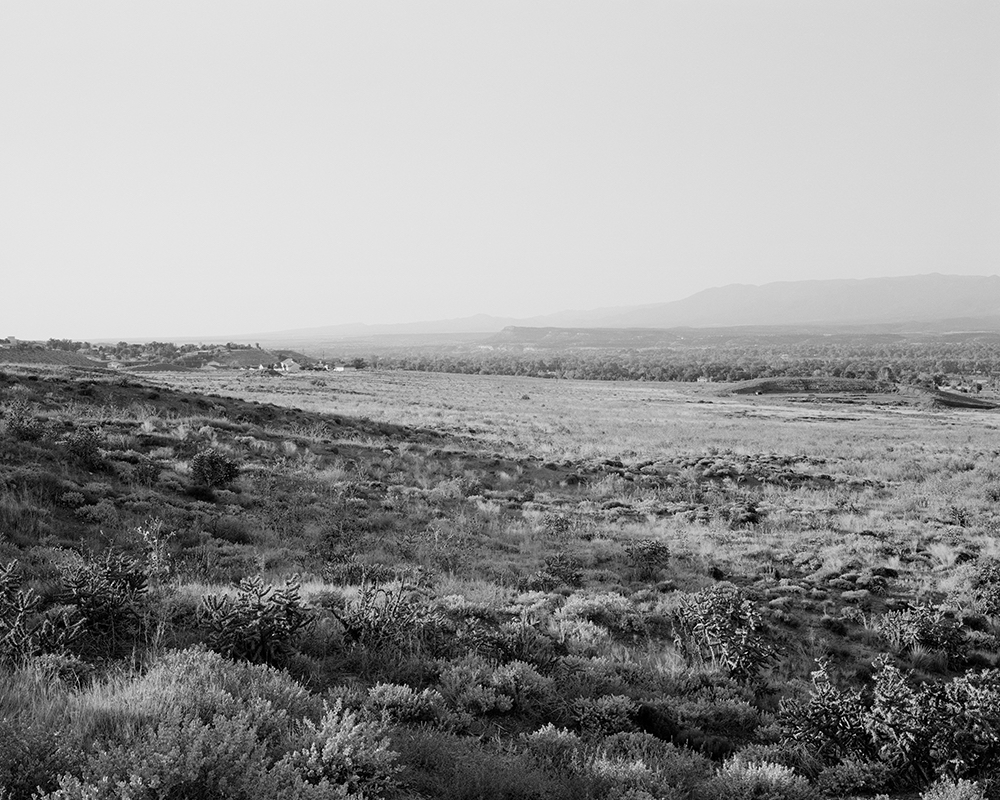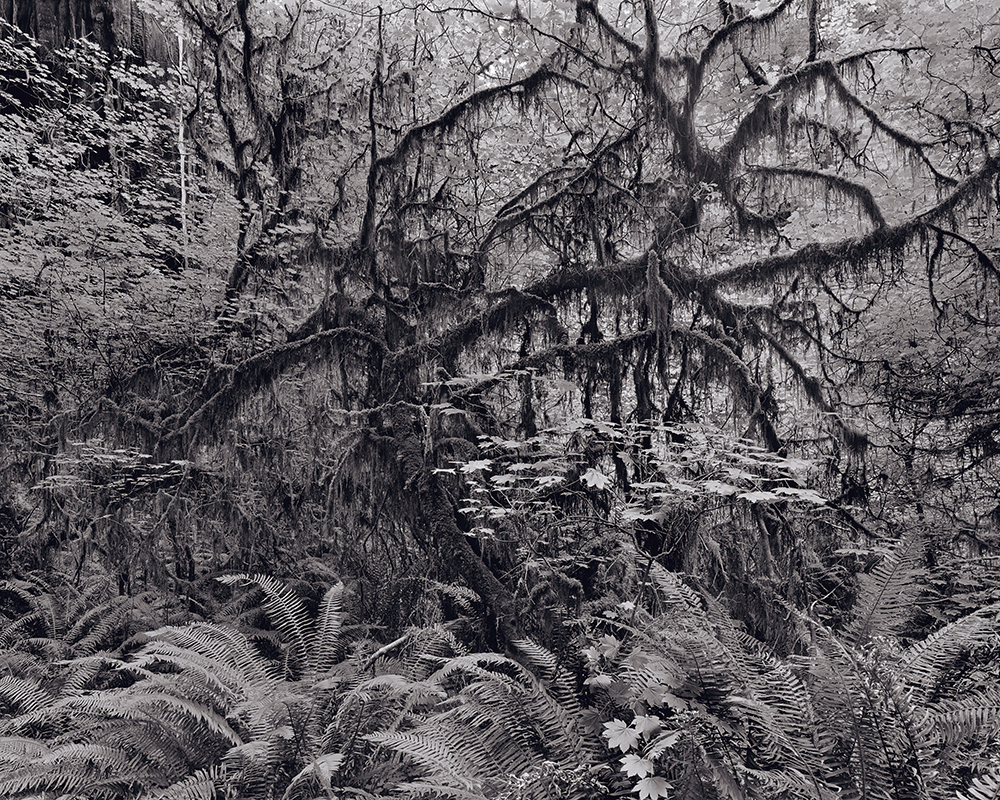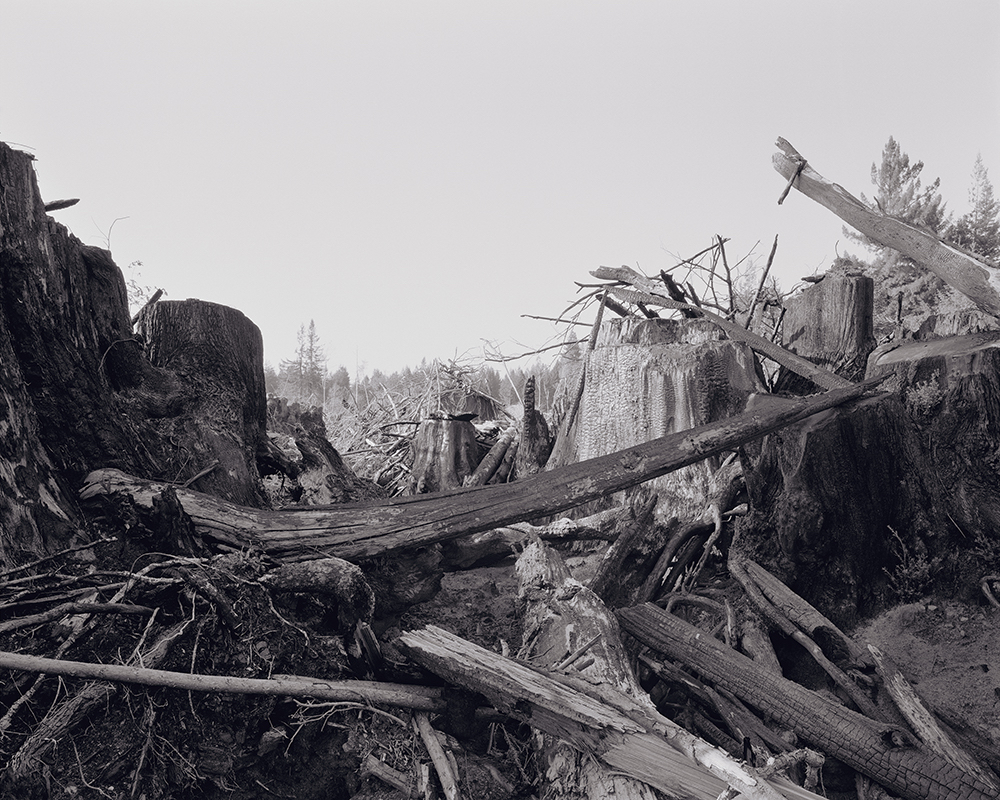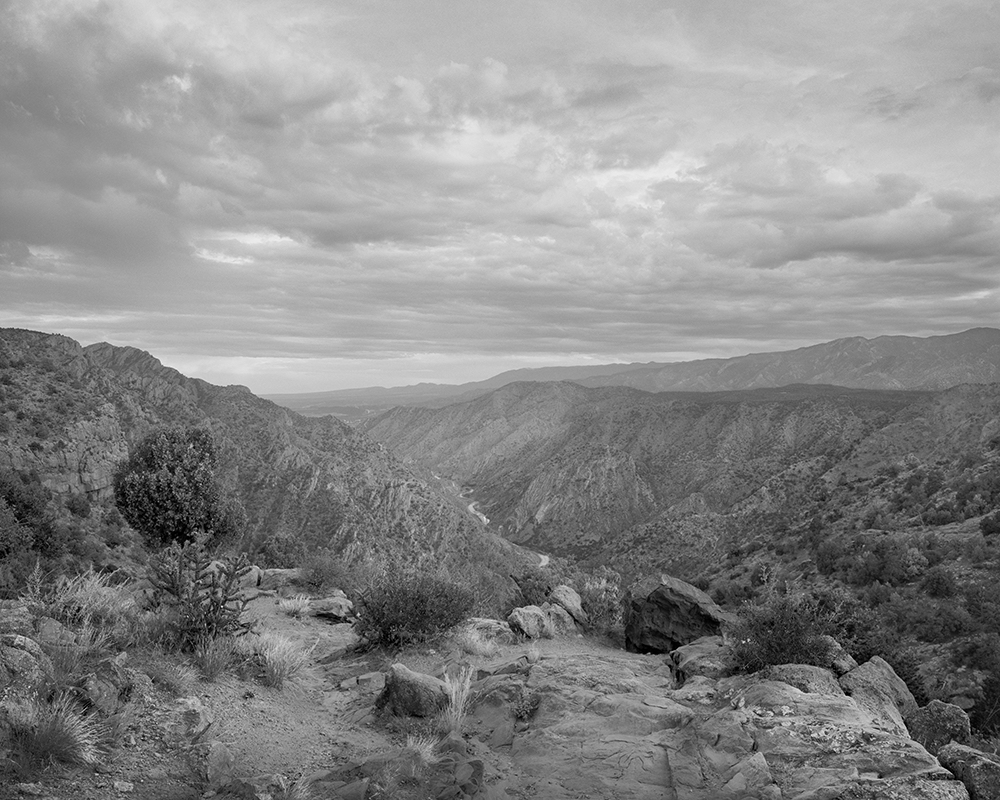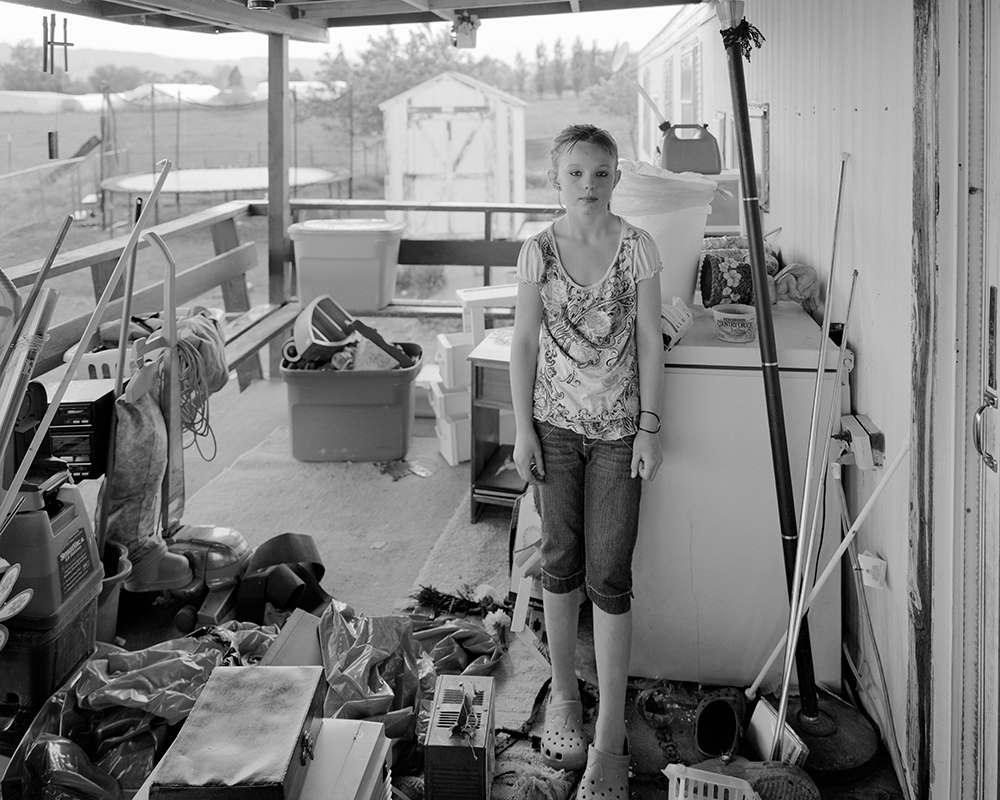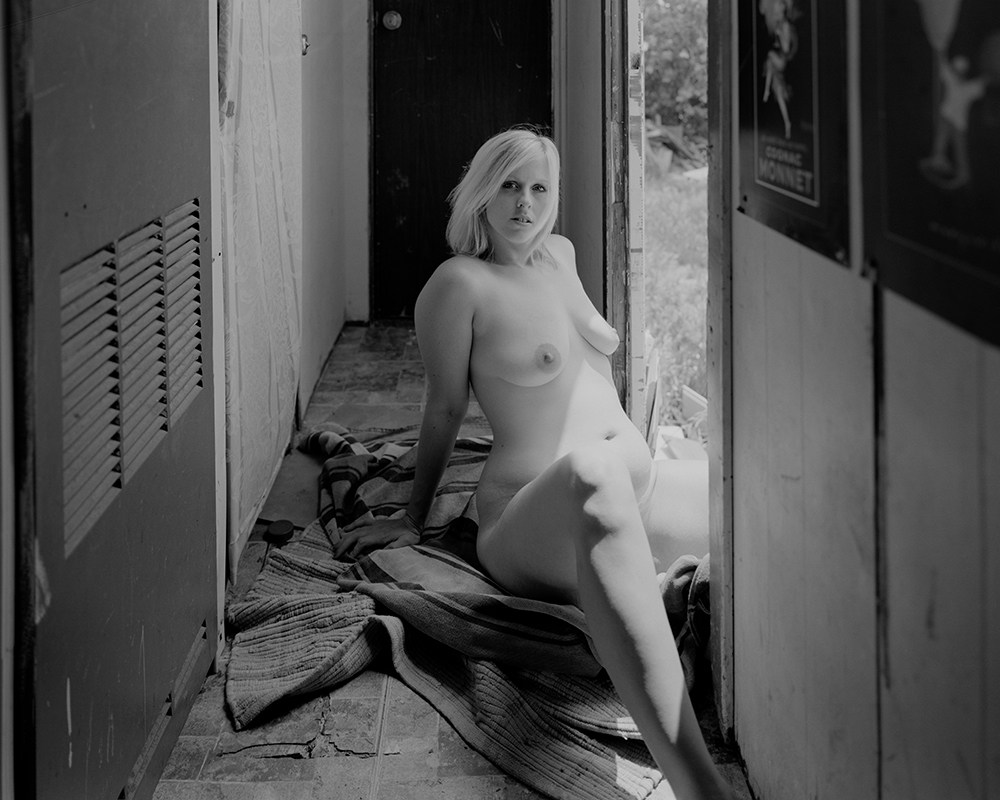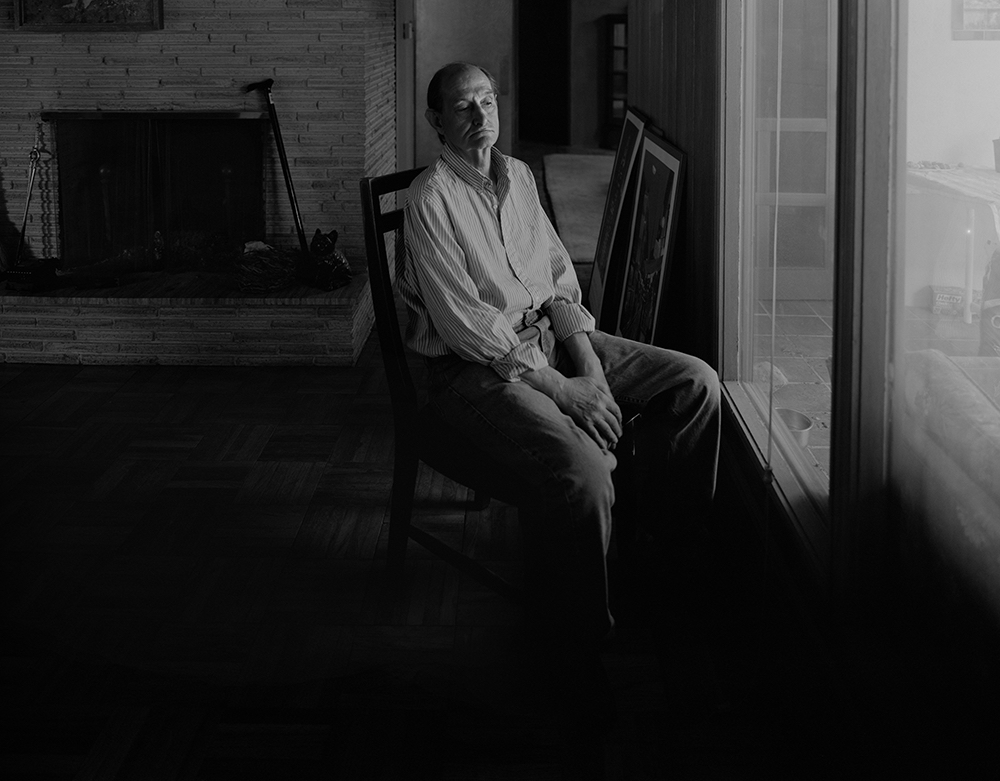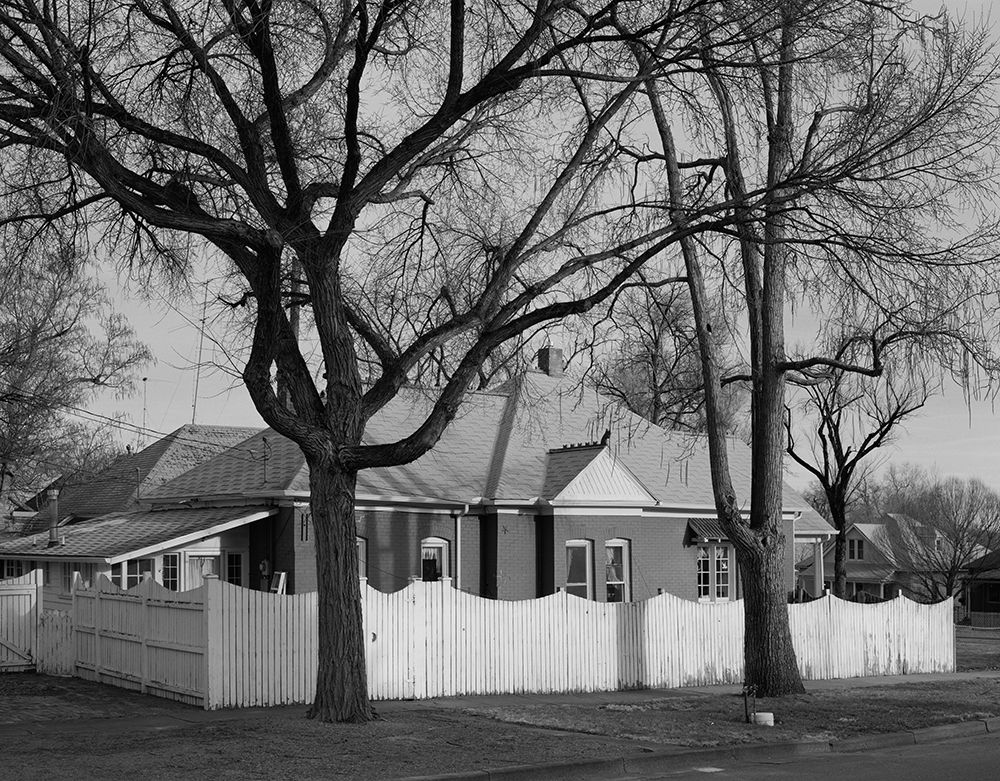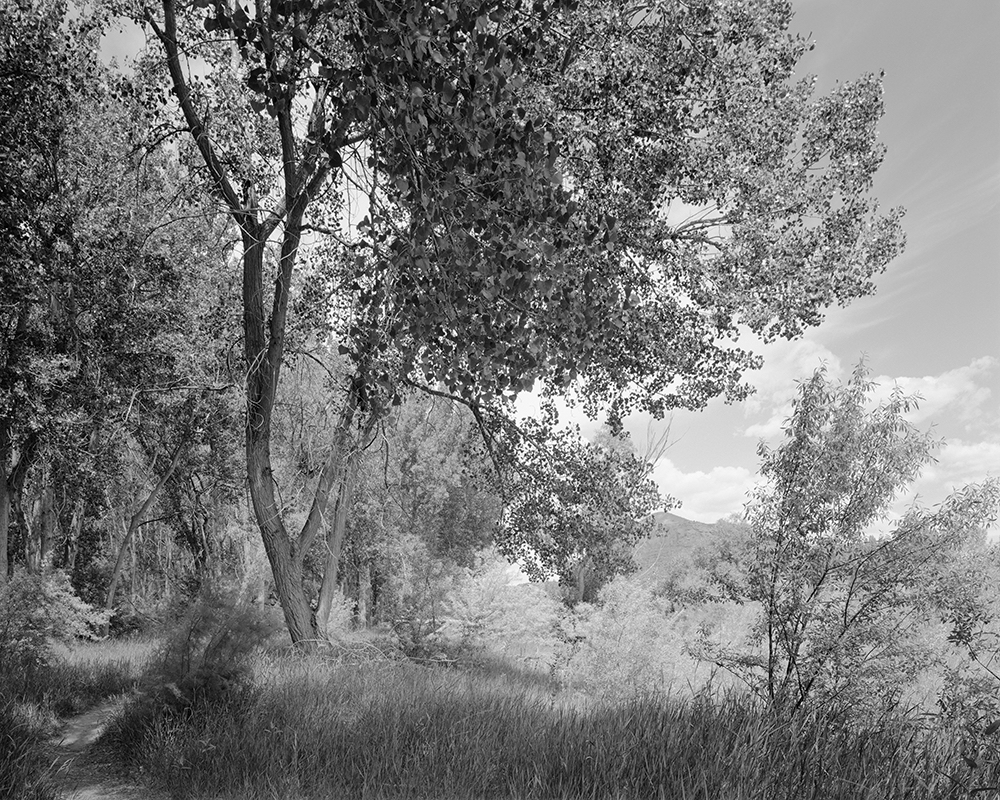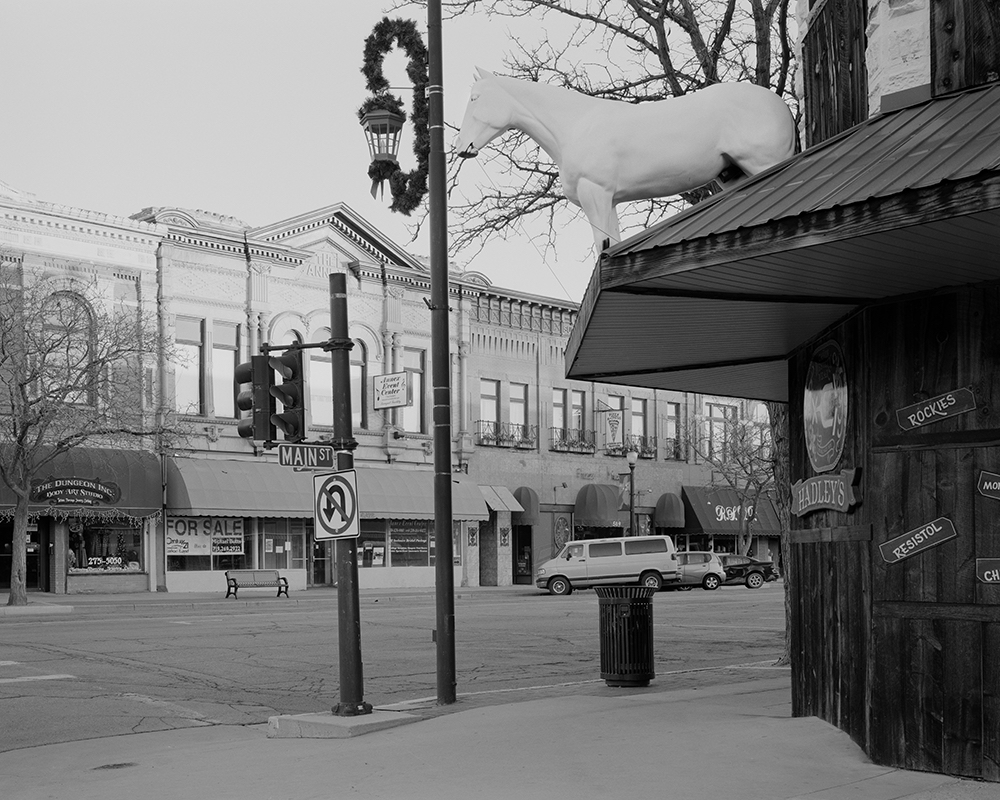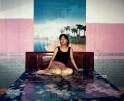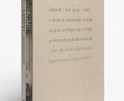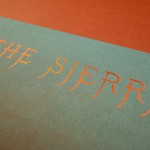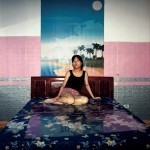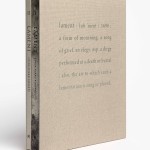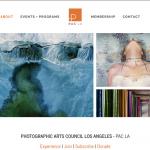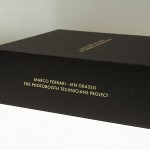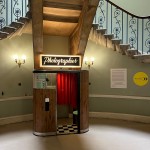Photographers on Photographers: Emily Hamilton Laux on Richard Rothman
For the entire month of August, photographers will be interviewing photographers–sharing image makers who have inspired them, who they are curious about, whose work has impacted them in some way. I am so grateful to all the participants for their efforts, talents, and time. -Aline Smithson
I met Richard Rothman about four years ago, in a class he taught at the International Center of Photography on large format photography. His teaching, both the technical and cerebral aspects, deeply influenced the way I think about making pictures. After memorizing the zone system’s tricky math, and sitting for hours loading film in blacked-out closets, I realized I could push myself more technically. Richard’s class, especially the discussions of iconic 20th century work, helped me to become more deeply conscious about creating images that express my ideas while paying closer attention to formal considerations.
I interviewed Richard in early July, when he was deep into editing his forthcoming book, Town of C, to be published by Nazraeli in 2019.
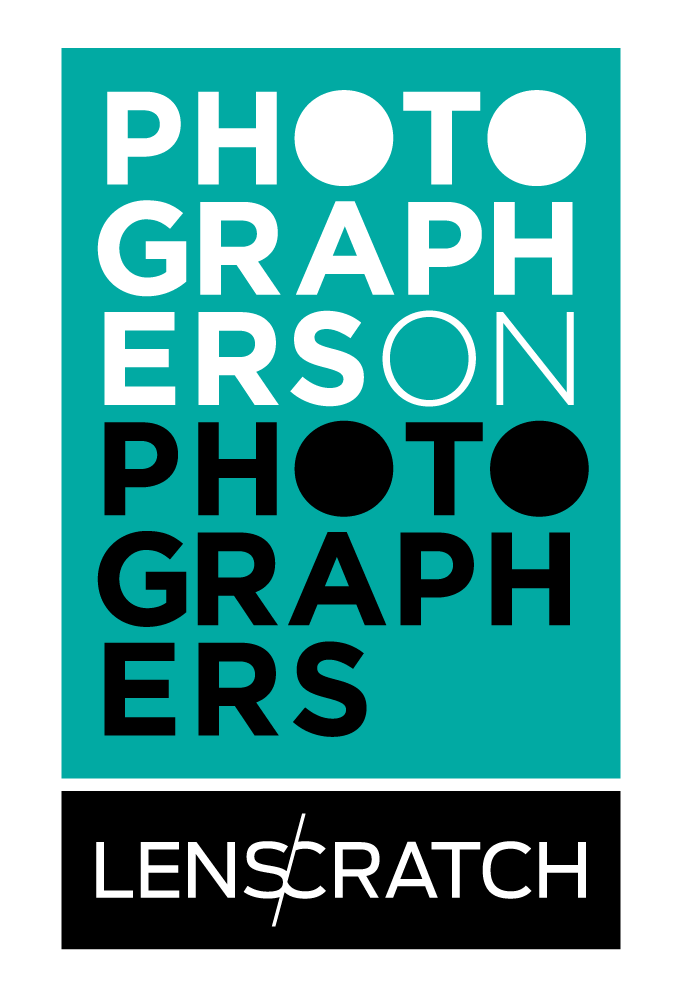 Emily Hamilton Laux is an artist who uses photography and installation to address ideas about the human relationship with internal and external worlds.
Emily Hamilton Laux is an artist who uses photography and installation to address ideas about the human relationship with internal and external worlds.
Born in Saigon, and raised in Cambodia, Paris and Washington, Laux has an MA from the American University School of International Service and a BA from Tulane University. Previously, Laux worked as a writer and editor in financial publishing in New York, London and Hong Kong. In Connecticut, she worked as a photojournalist, gallery manager and arts publicist.
In 2017, Laux exhibited her work at the Griffin Museum of Photography, and numerous galleries in the Northeast, including the Davis Orton Gallery, the Westport Arts Center, and the Ridgefield Artists Guild, among others. Her bodies of work Invasives will be on view at the Griffin Museum of Photography in the summer of 2019.
Laux maintains a studio at Firing Circuits Studios in Norwalk, and is member of the Westport Artists Collective and the Ridgefield Guild of Artists. She lives in Westport, CT.
Richard Rothman is a photographer who works with a 4×5 camera. His 2011 book Redwood Saw received many accolades; most recently, it was included in MoMA’s 2017-18 exhibition American Surfaces and the Photobook.
Richard is a 2015 Guggenheim Fellow, and a 2016 artist-in-residence at the MacDowell Colony and Light Work in Syracuse, NY. His work is included in the permanent collections of the Museum of Modern Art, the Bibliothèque Nationale de France,The Brooklyn Museum, The Center for Creative Photography, the International Center of Photography, and Yale University Art Gallery. His work has been exhibited internationally, and appeared and been reviewed in many publications, including Time, The New York Times, The New Yorker, PDN, TimeOut New York, San Francisco Chronicle, Art Forum, The Village Voice, Camerawork, and Open City. He lives in New York City and is on the faculty of the International Center of Photography and the School of Visual Arts.
Emily Hamilton Laux: When I took your class, you had recently published Redwood Saw, a book that has been described as a photographic novel. Your new work, Town of C, will be published by Nazraeli in 2019. Tell me about Town of C and its relationship to Redwood Saw.
Richard Rothman: Town of C is a book that is similar to Redwood Saw in that it, too, is a portrait of a small American town. In this case, it’s a twelve and-a-half square-mile town set within a dramatic southwestern landscape along the Front Range of southern Colorado’s Rocky Mountains. The town sits in high desert land, and straddles the Arkansas River where it flows through a narrow 1,250 foot-deep gorge as it inexorably works its way east toward the expanse of the Great Plains and the distant Mississippi.
The earliest pictures in Town of C date back to 2004, right before I began working on Redwood Saw. I work on more than one project at a time and the beginnings of this one were long in the making. I’d been visiting this town for years before I decided to begin a project there. Photographs of the west seemed like iconic territory that had been realized so definitively by both early and contemporary photographers. I thought I didn’t have anything important to add to the conversation until my experience of the place accumulated to the point that I suddenly realized I had something of my own to try to say.
The project was eventually conceived as a multi-layered narrative with numerous themes that would be woven together throughout the book. The conceit of a ‘photographic novel’ has continued to be very much on my mind, though probably more as an inspirational thought than anything exact in terms of parsing the definition of a novel. When I finished Redwood Saw I knew I was going to put this project on the front burner and I wanted to continue with the form I’d established and the idea of creating a portrait of a town, but I wanted to add more to the mix. I wanted to add a personal dimension to the work. The question I asked myself was how could I make the story bigger and the form fresher, riskier, more complex while still being intelligible.
EL: So you were familiar with Town of C well before publishing Redwood Saw? When and why did you realize you really had something to say about Town of C?
RR: I had an ongoing relationship with the town and it was a place of wonder for me, surrounded as it is by magnificent varied landscape and open space. Even the clarity of the alpine light – all the land is over 5,000 feet above sea level and when the winds come over the mountains they blow away all the particulate matter in the air so you’re seeing what the world once looked like – was a revelation for me.
I’d get up every day before dawn and spend the day driving around and hiking till dinner time and I just couldn’t get enough of it. I was connecting to the feeling of awe and wonder that one can experience in the presence of nature’s unspoiled possibilities and that excited me, and one day, after years of getting to know the place, I suddenly no longer felt like a tourist. I felt like the place had become one of “my places” because I’d spent the kind of time looking at it and exploring it in the way a child with new eyes spends discovering his little piece of the world.
That kind of looking is the greater part of the pleasure that one can extract from the whole enterprise of taking pictures. Looking at something until it becomes a part of you.
When I began working on Redwood Saw in the summer of 2004, there wasn’t anything like that book that I knew of and I felt I was forging a new structure for a photography book. I jumped completely into it knowing I’d continue with the work in Colorado. As the structure of Redwood Saw evolved to include the forest, the town, its people, the ocean, my thoughts about American culture, and what I hoped would be understood as a larger planetary context, I began to think of the Colorado project in similar terms. Only, as I’ve said, I wanted to make it even more challenging and add additional layers to the mix.
EL: Can you talk a bit more about the structure of Town of C, specifically the additional layers you mentioned?
RR: I’m in the very final stages of editing the book so the structure is still fluid and in play. At the moment the book opens with an overture of sorts announcing major themes. Pictures that have brief titles on the opposite page are separated by blank double-page spreads. The first is The River, which is a picture of a deep gorge at the source of the Arkansas river as it begins its journey east through the town and onward. It’s a massive panorama of a dramatic mountainous landscape as it opens up and flattens out into the Great Plains. The second picture is titled Town of C, and it’s an overview of the town taken from the foothills of the mountains. A third picture is a photograph of the outside of a home idyllically blanketed in snow.
So it’s the larger geological picture and its reference to deep time, the town, and by extension, the local culture, and then home that are being announced as opening themes. Many other themes are interlaced throughout the narrative of the book: eroticism, loss of innocence, prison, youth culture, aging, income inequality, impoverished fantasy lives and the need for escape, to mention a few.
EL: It can be difficult for artists to maintain the focus on one project while gestating or even focusing on another. How do you separate and prioritize? What advice can you give an artist with lots of ideas but not much experience shutting down all the extraneous.
RR: My advice is always to work from whatever seems most interesting and important to you. Of course, you have to take into account all the practical realities of what kind of experiences you can access from where you are in the world. If you’re passionate about things, you’ll feel like your priorities aren’t choices, so much as they’re always already set from within. You only need to pay attention to them. And then you need to find the photographic terms to turn that into significant pictures, because otherwise, all that feeling will just disappear in the images.
EL: Your work includes portraits of people who were strangers you encountered in these towns. How do you select your portrait subjects, complete strangers, and talk them into posing?
RR: One of the great things about making art is you get to engage as much of yourself as you possibly can. You bring all your conscious awareness, your thinking process, your decisions, and the rules that you alone have created for yourself, and you get to apply that to a subject of your own choosing while tapping into the deepest reservoirs of unconscious thought and intuition that you’re capable of.
The way that manifests itself in the portraits is in choosing your subjects, which for me is an entirely intuitive process. Some people are going to be more interesting to photograph than others, and some people are going to express, in their being and affect, emotions that you want to uncover in your work. Recognizing that is key to making portraits.
Getting those people to agree to let you photograph them is another part of the work. I’ve developed ways to become more successful at this over time and they’re subtle, would take a long time to describe, and aren’t necessarily transferable, but I would say that it’s entirely psychological. It involves sensitivity to others, conviction, and above all, timing.
EL: Thank you, Richard. Finally, how would you describe your perfect day?
RR: When Redwood Saw was printed, Chris Pichler, the publisher of Nazraeli Press, was kind enough to FedEx a copy to me when I was in Colorado on a shoot for this book. It came on a glorious, late summer afternoon and without opening it I packed it in the car and drove out of town to a cabin high up in the Sangre De Cristo mountains that overlooks the majestic Wetmore Valley, one of the most beautiful places I’ve ever laid eyes on. I set two chairs out on the deck facing the peaks and when I opened it to the first picture I breathed a sigh of relief. Then, as I continued on, I was flooded with a gradual feeling of satisfaction. Chris had done such a wonderful job on the printing.
When we decided to work together on the book I asked him if he could promise me one thing: that when I opened the book I wouldn’t say ‘where did my pictures go,’ because I’d seen that happen to many photographers. He said if you’re willing to be patient we’ll proof the book until you’re satisfied with the results, and that’s what we did. We had worked for over a year proofing the pictures to get them as close to the prints as we could and there it was. The gratitude I felt for that and the sense of satisfaction that accompanied holding that book in my hands gave me an unusual sense of fullness. Something that was empty had been filled. Similar in some ways to the first time I found myself in a Redwood forest.
Posts on Lenscratch may not be reproduced without the permission of the Lenscratch staff and the photographer.
Recommended
-
Aaron Rothman: The SierraDecember 18th, 2025
-
Photographers on Photographers: Congyu Liu in Conversation with Vân-Nhi NguyễnDecember 8th, 2025
-
Linda Foard Roberts: LamentNovember 25th, 2025
-
Arnold Newman Prize: C. Rose Smith: Scenes of Self: Redressing PatriarchyNovember 24th, 2025
-
Spotlight on the Photographic Arts Council Los AngelesNovember 23rd, 2025

